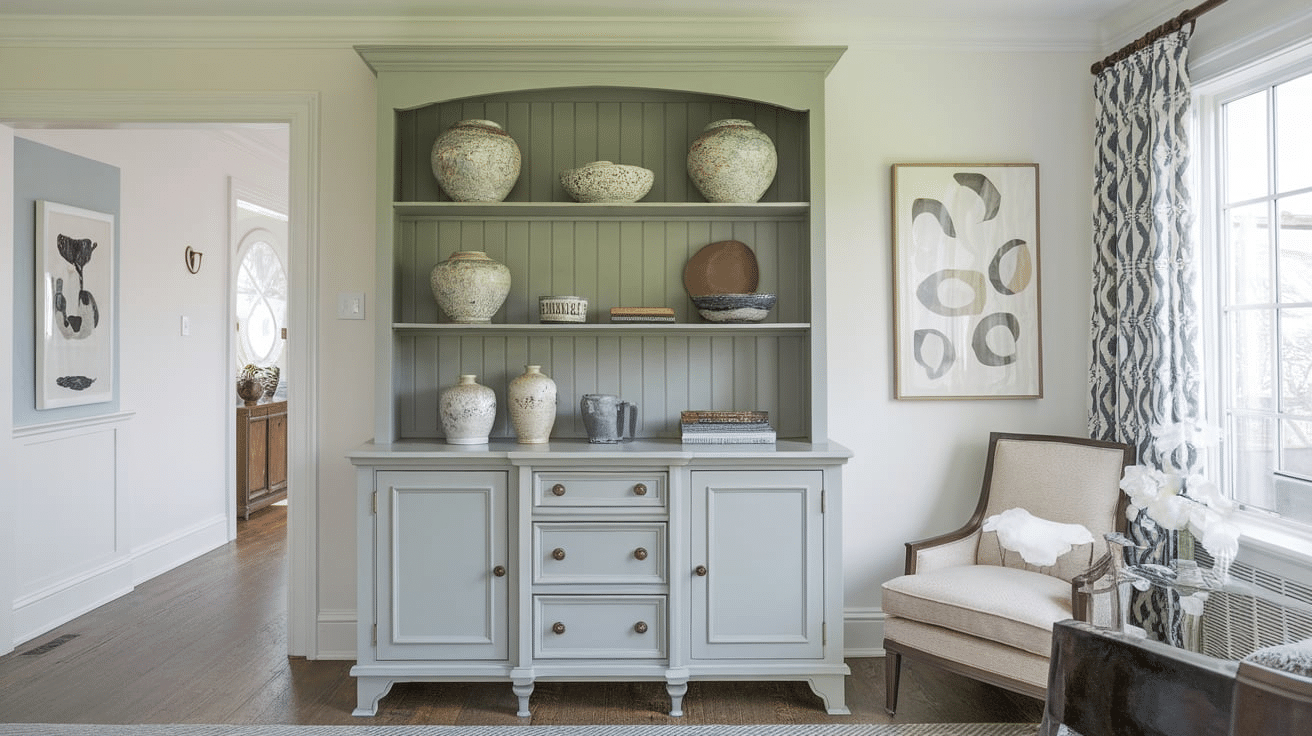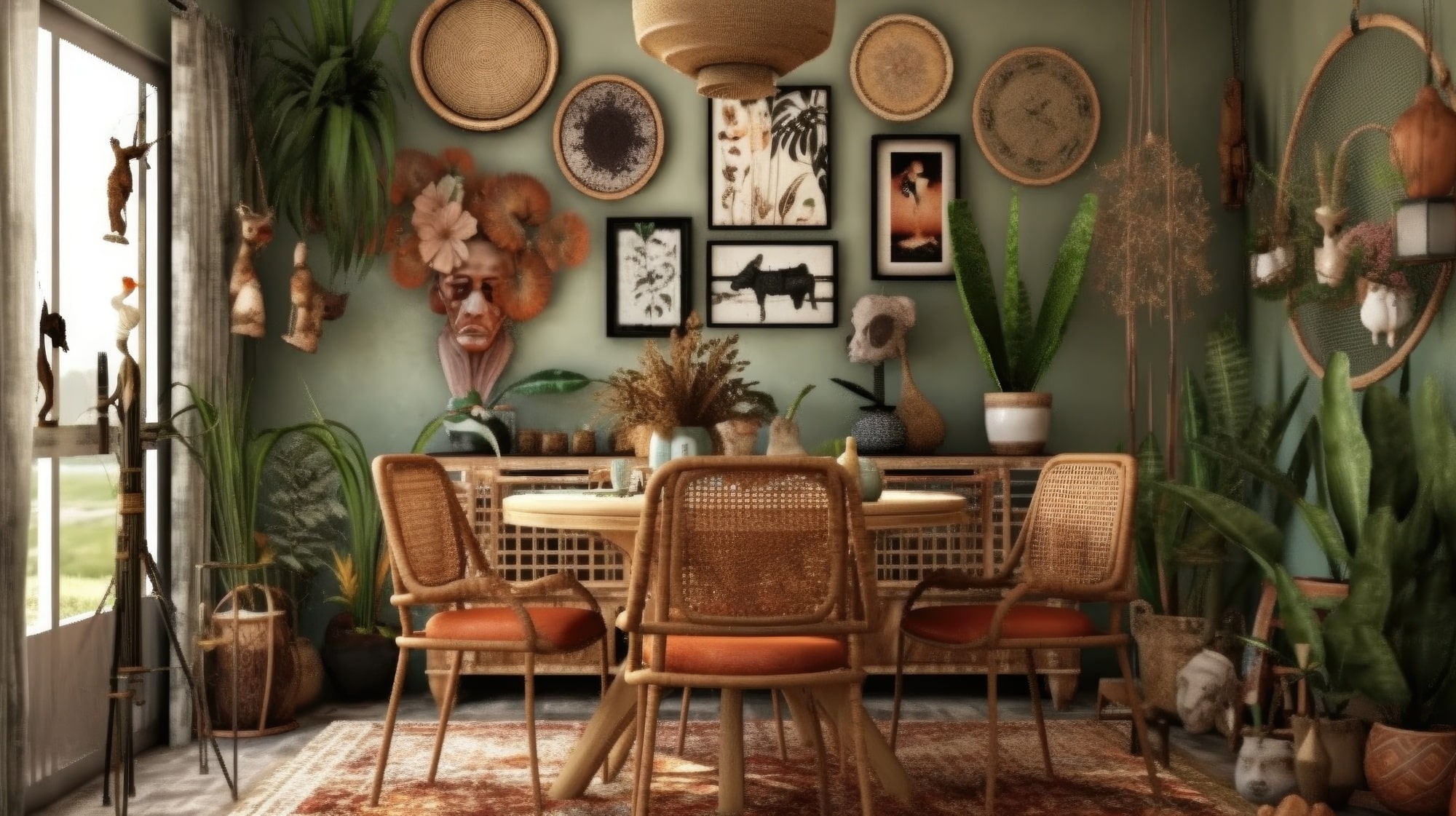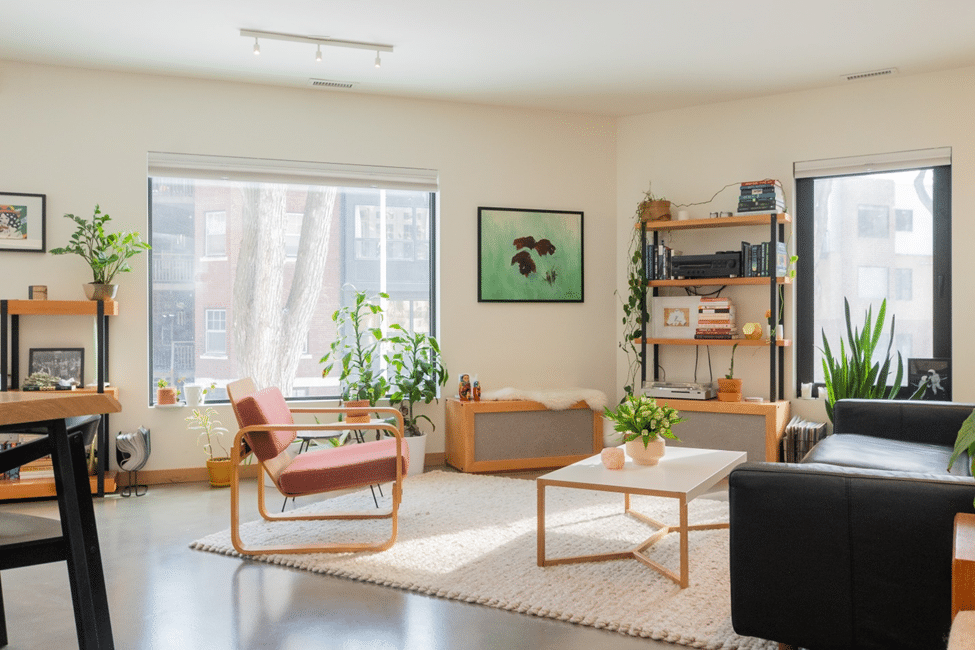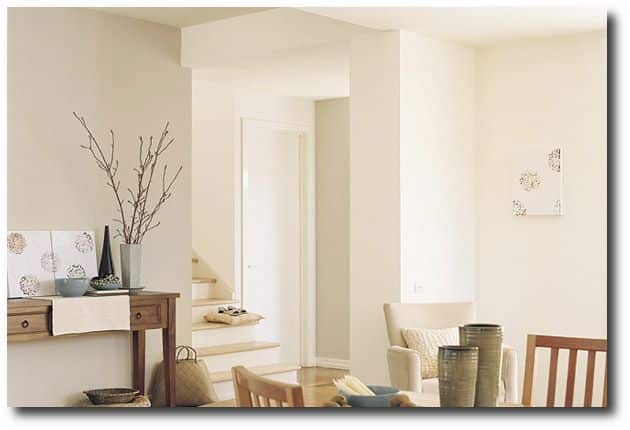China Cabinet Makeover: 13 Creative Ideas and Tips
That old china cabinet sitting in your dining room holds more potential than you might think.
Once a showcase for formal dishes, these classic furniture pieces are finding new life through creative makeovers.
This guide will help you improve your outdated cabinet into a functional, stylish piece that fits your current home and needs.
Suppose you’re looking to refresh its look with paint and new hardware or completely change its purpose into a coffee station, bar, or display case. In that case, a china cabinet makeover offers big rewards for a modest investment.
We’ll cover everything from planning and preparation to creative ideas and step-by-step instructions to help you tackle this satisfying weekend project.
Why Consider a China Cabinet Makeover?
Old china cabinets often sit unused in dining rooms, looking outdated and taking up space. Giving your cabinet a fresh update can bring new life to both the piece and your home.
A simple update to your china cabinet can completely change the look of a room. With some paint, new hardware, or glass treatments, you can turn an old-fashioned piece into something that fits your current home style.
Light colors can make a space feel bigger, while darker tones add warmth and character to a room.
Functionality and Cost-Effectiveness
Many homeowners are finding new uses for their china cabinets beyond storing formal dishes. These sturdy pieces can be turned into useful storage spaces like coffee stations, home bars, craft supply centers, or book displays.
Adding different shelving or lighting can make the cabinet more useful for your daily needs. Buying new, quality furniture can be expensive.
Updating an existing china cabinet costs much less than purchasing a new storage piece of similar size and quality.
With some basic supplies and a weekend of work, you can create a custom piece that would cost hundreds or thousands more if bought new.
Key Considerations Before Starting Your China Cabinet Makeover
Before jumping into your china cabinet project, take some time to plan. A thoughtful approach will save you time, money, and potential headaches.
Assessing the Condition
Start by checking your cabinet for any issues that need fixing. Look for loose joints, wobbly legs, broken glass, or damaged wood. Small repairs should be done before painting or finishing.
Test all drawers and doors to ensure they open and close properly. If you find serious structural problems, you might need to fix them first or consider if the piece is worth the extra work.
Choosing the Right Materials
Your material choices will affect both the finished piece’s appearance and the length of the makeover. For paint, choose quality options made for furniture.
Oil-based paints tend to be more long-lasting, while water-based ones are easier to use. If you prefer a wood look, stains can highlight the natural grain.
Don’t forget about hardware – new handles, knobs, and hinges can make a big difference with minimal effort. Consider glass options, too – clear, frosted, or patterned glass can change the whole feel of your cabinet.
Determining Style and Purpose
Think about how you want to use your cabinet. Will it remain a display piece, or do you need it for storage? If you’re creating a coffee station, you might need to adjust shelving heights.
For a home bar, you might want to add wine glass holders or bottle storage. The intended use should guide your design choices.
Also, consider your home’s overall style – a farmhouse look might call for distressed paint, while a modern home might suit a sleek, solid finish.
Creative Ideas for a China Cabinet Makeover
China cabinets offer endless chances for personal expression through various makeover styles.
Here are some popular approaches that can upgrade your old piece into something fresh and useful.
1. Modern Farmhouse Upgrade
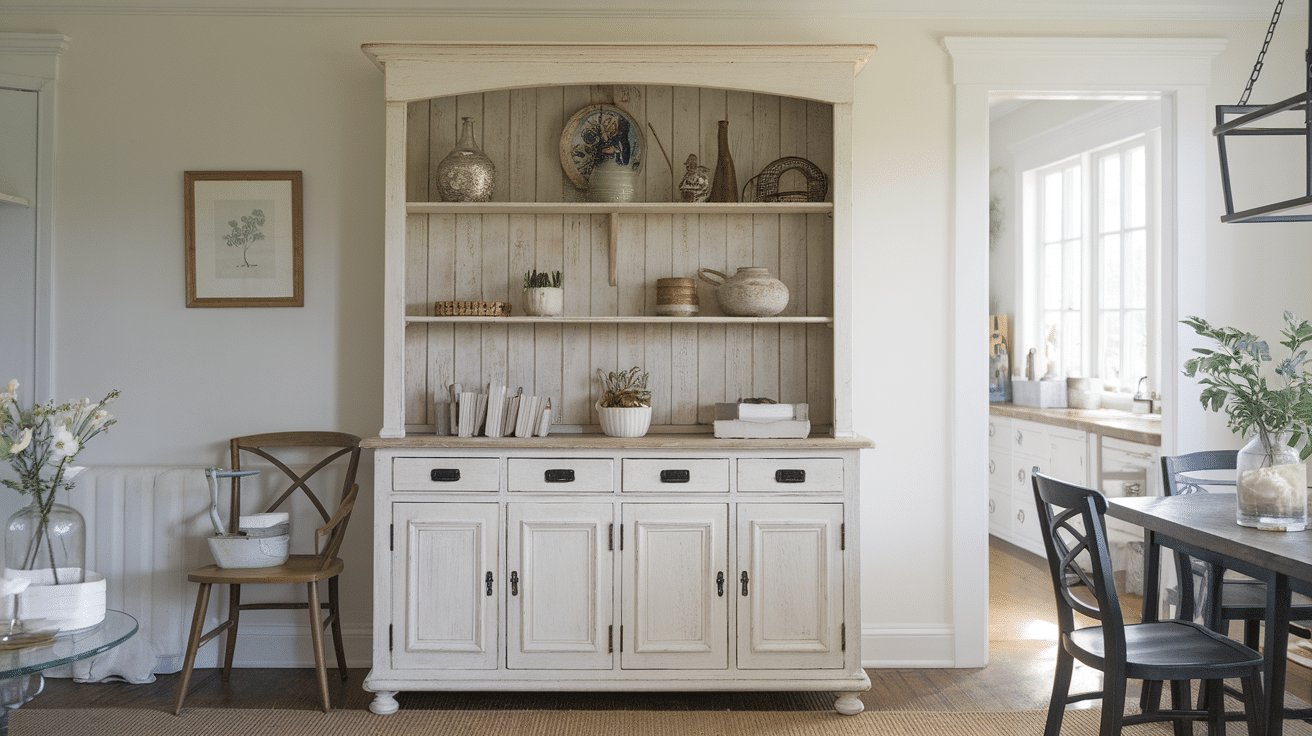
A farmhouse-style update brings warmth and comfort to any space. Start with a light paint coat on the cabinet body while keeping some wood elements natural.
Add simple black hardware for contrast. Consider removing some cabinet doors to create open shelving for displaying everyday items.
This look works well in many homes and can blend with existing decor without feeling out of place.
2. Turn it into a Coffee Station
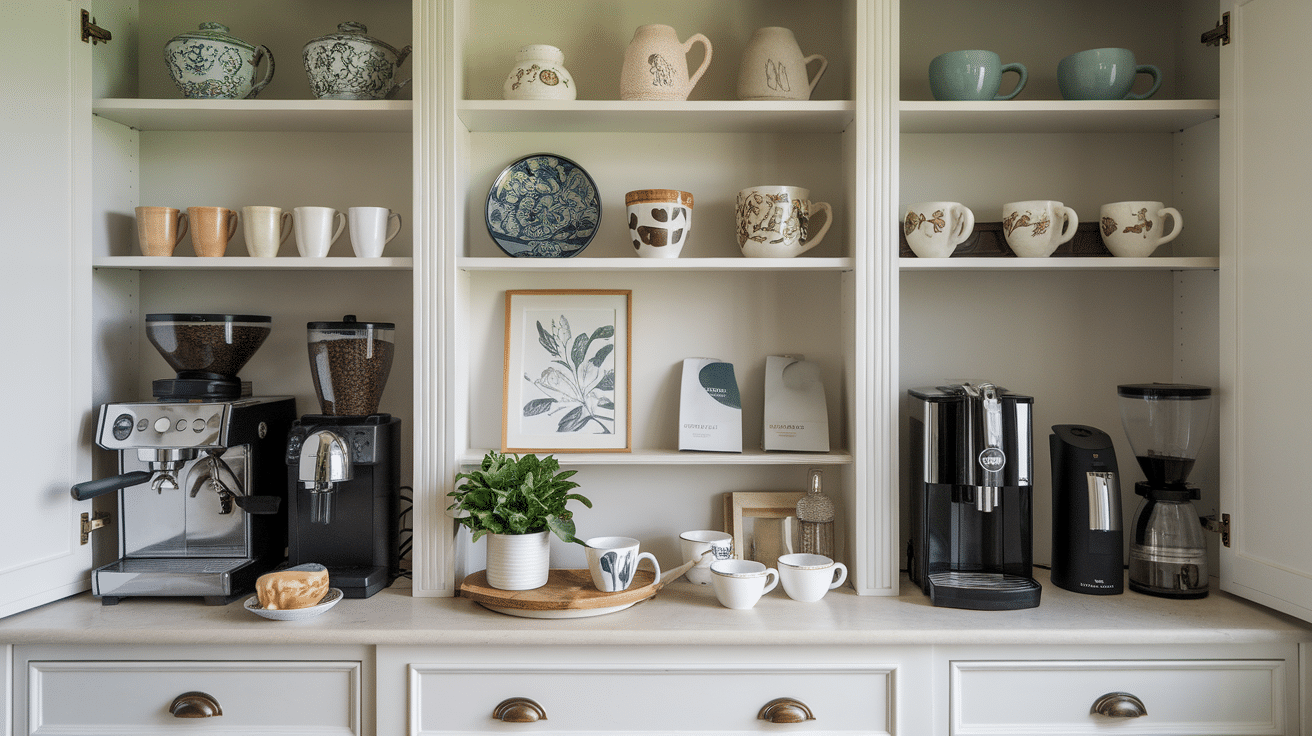
Coffee stations have become very popular in home design. Remove internal shelves to fit coffee makers and grinders.
Install hooks underneath the upper cabinets for mugs. Add small drawers or baskets to store coffee pods, filters, and other supplies.
The glass display areas are perfect for displaying pretty mugs or special coffee blends, making morning routines more pleasant and organized.
3. Create a Bar Cabinet
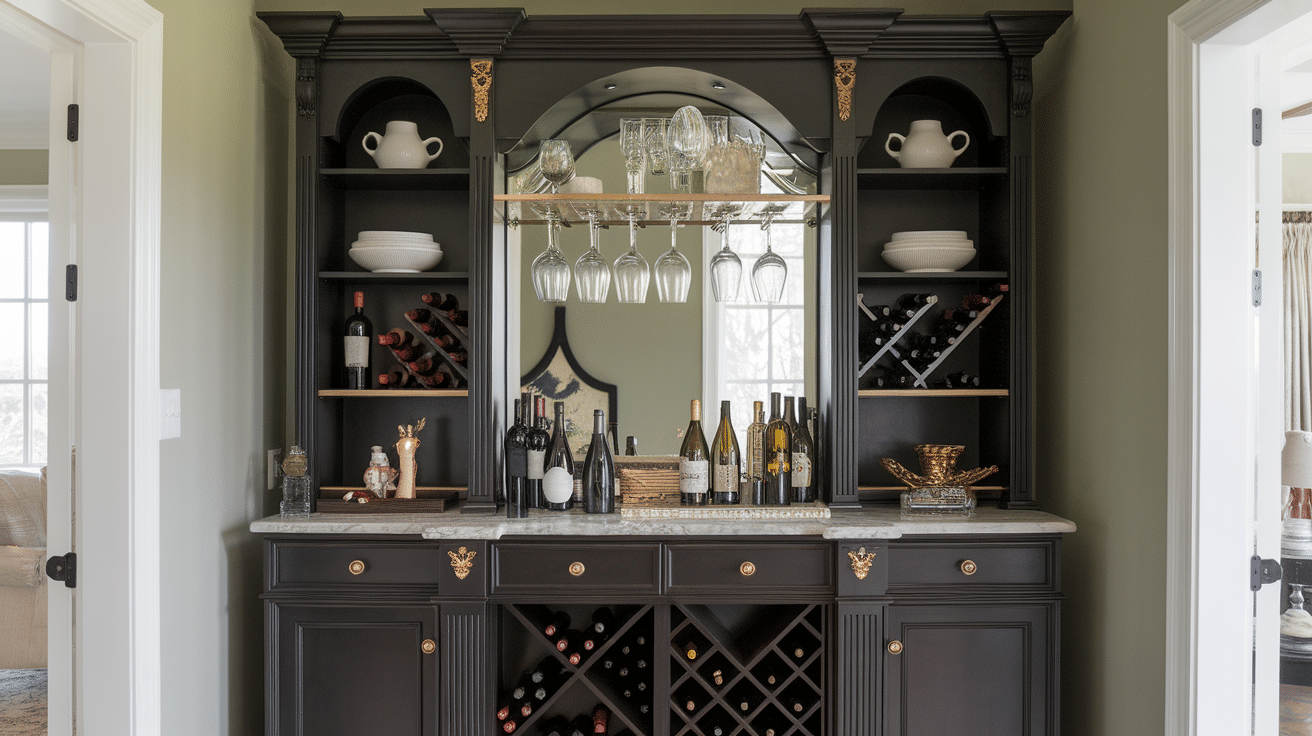
With some thoughtful changes, a china cabinet makes an ideal home bar. The enclosed storage works well for bottles and glasses, while display areas can showcase special spirits or cocktail books.
Add a small pull-out shelf for mixing drinks. Wine glass racks can be installed on the underside of shelves. Choose rich, deep colors that create a cozy, lounge-like feeling.
4. Vintage Antique Look
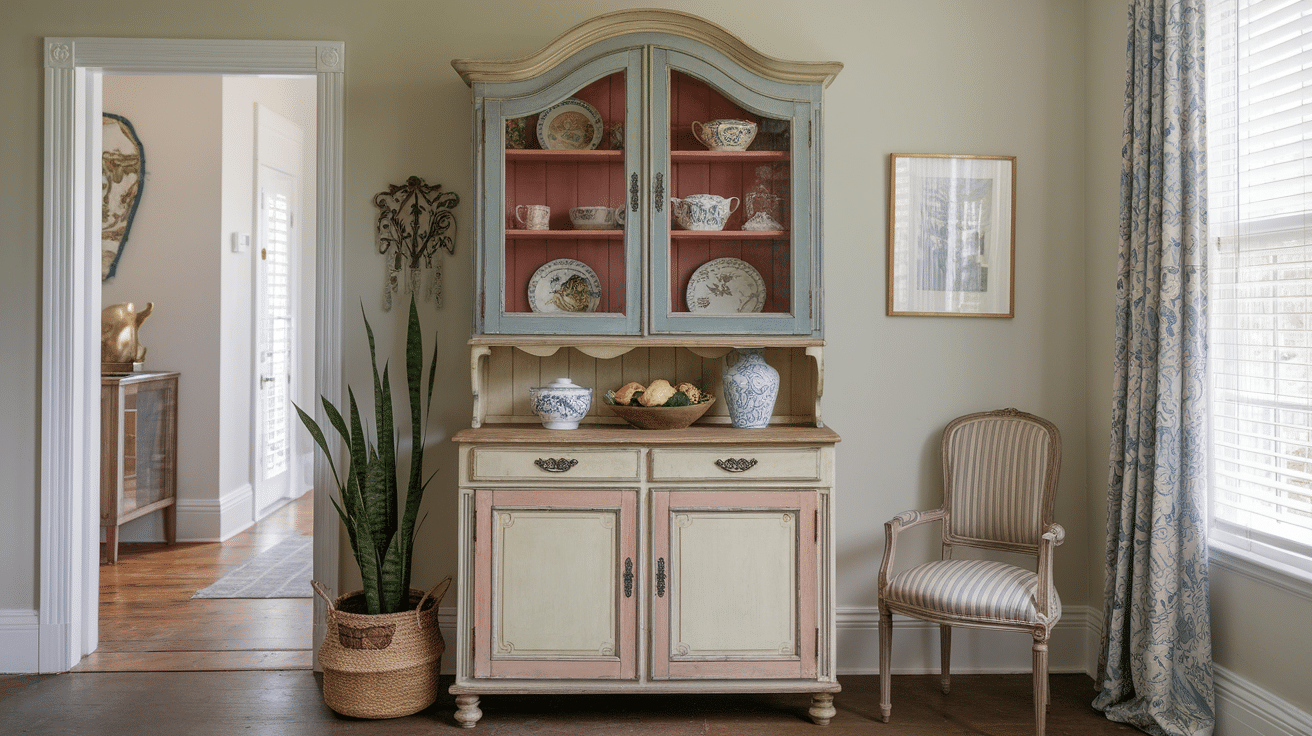
With techniques that highlight their age, bring out the natural charm of older cabinets.
When partially removed, light sanding followed by layered paint colors creates depth. Wax finishes add a soft glow while protecting the surface.
You can keep the original hardware or find vintage replacements at flea markets. This style celebrates the cabinet’s history while giving it a fresh appeal.
5. Chalk Paint Makeover
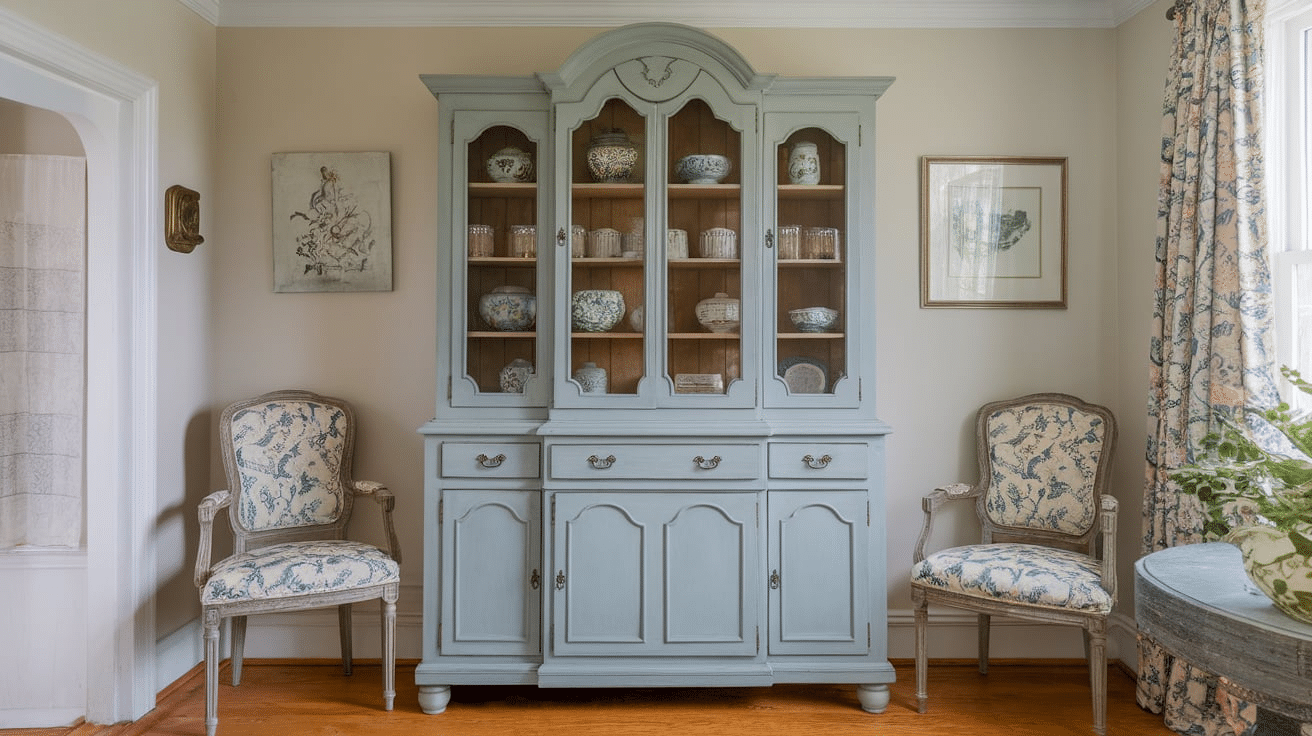
Chalk paint has become a go-to for furniture updates because it rarely needs primer and creates a soft, matte look.
It adheres well to most surfaces with minimal prep work. For best coverage, apply two thin coats, then seal with clear or tinted wax.
The finish allows some wood grain to show through, creating an interesting textured look that works in many home styles.
6. Bright Bold Colors

Make your china cabinet the focal point with unexpected, bright colors. Deep blues, greens, or even reds can upgrade a plain piece into a statement.
Paint the inside a contrasting color for extra visual impact when doors are opened.
This approach works best in homes with otherwise neutral color schemes, where the cabinet can stand out without competing with other elements.
7. Glass and Mirror Inserts
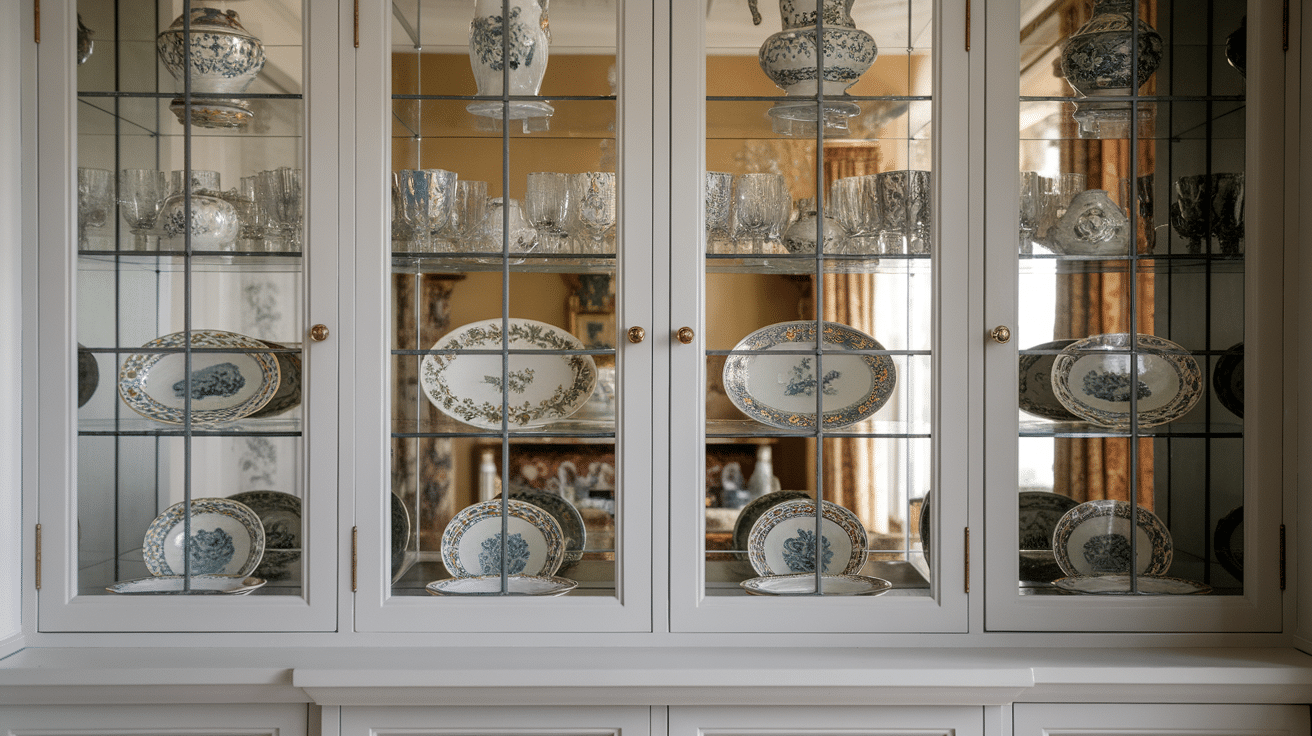
Adding glass or mirrors changes how a china cabinet looks and feels in a room.
Replace solid panels with glass to lighten the cabinet’s appearance and show off items stored inside. Mirrors can make small spaces look bigger and reflect light.
Consider textured or patterned glass for visual interest without full transparency, hiding less attractive items while still allowing light through.
8. Mid-Century Modern Update

The clean lines of many china cabinets work perfectly for a mid-century modern style.
Strip old finishes completely and sand smooth before applying teak or walnut-toned stains to showcase the wood grain. Keep the finish matte rather than glossy.
Replace old handles with simple brass or wood pulls set at clean angles. If possible, taper legs or add hairpin supports. This style works best with cabinets that have straight lines and minimal curves.
9. Shabby Chic with Floral Wallpaper
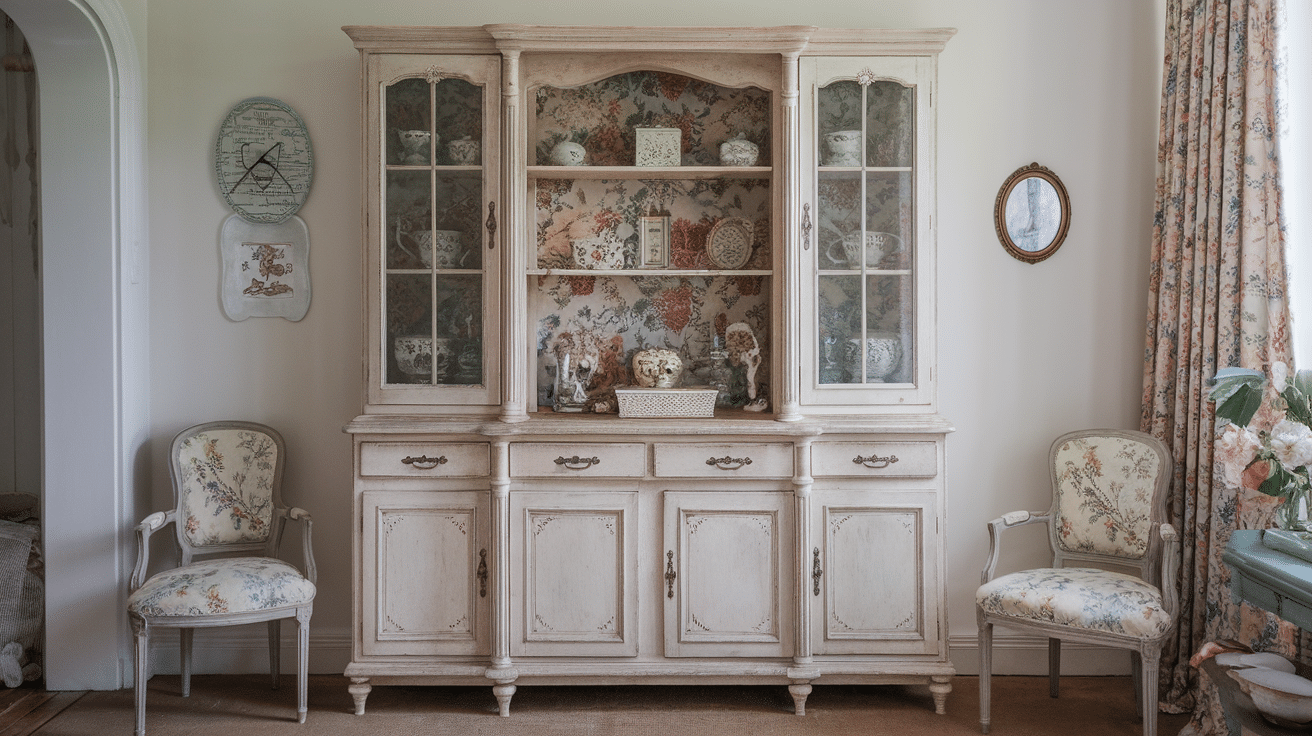
For a soft, romantic look, line the back walls of your china cabinet with pretty floral wallpaper. For the cabinet body, choose light cream or pastel paint.
Gently sand edges and corners after painting to show a bit of the wood underneath, creating a well-loved look. Glass knobs or ceramic pulls enhance the style.
This approach works wonderfully for displaying tea sets, cake stands, or other feminine kitchen items.
10. Industrial Style Makeover

Turn your traditional piece into something with an urban edge. Paint the cabinet in dark gray or black and add metal corner braces or strapping for an industrial feel.
Replace wooden shelves with metal mesh or pipe shelving. Use plumbing pipe handles for drawers and doors.
This style pairs well with brick walls and other raw materials, creating an interesting mix of refined cabinet shape with rougher industrial touches.
11. Rustic Barn Door Style
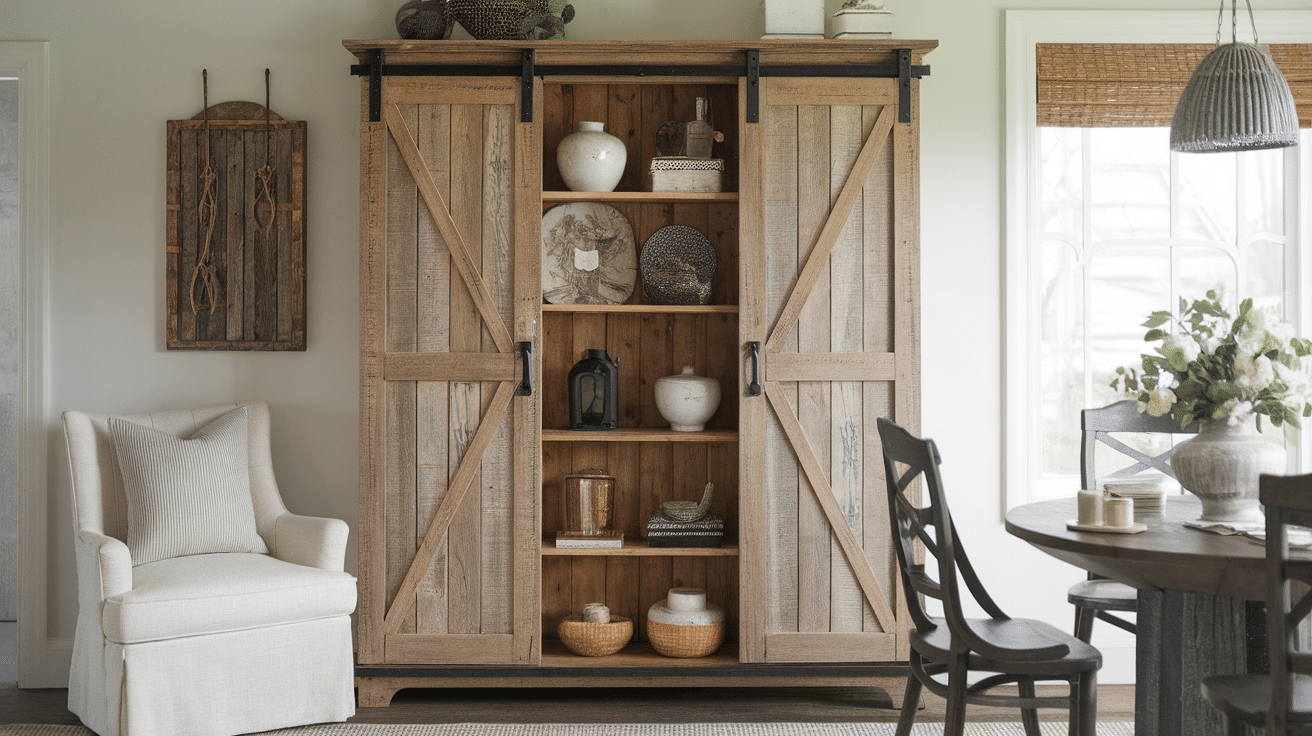
For a major style update, replace swing-open doors with sliding barn-style doors. This may require adding tracks above the cabinet openings.
Use worn wood or paint and distress to match the farmhouse style. Add metal handles that look like they belong on a barn gate.
This modification works especially well for wider cabinets and creates a casual, country feel while maintaining functionality.
12. Repurpose as a Bedroom Dresser
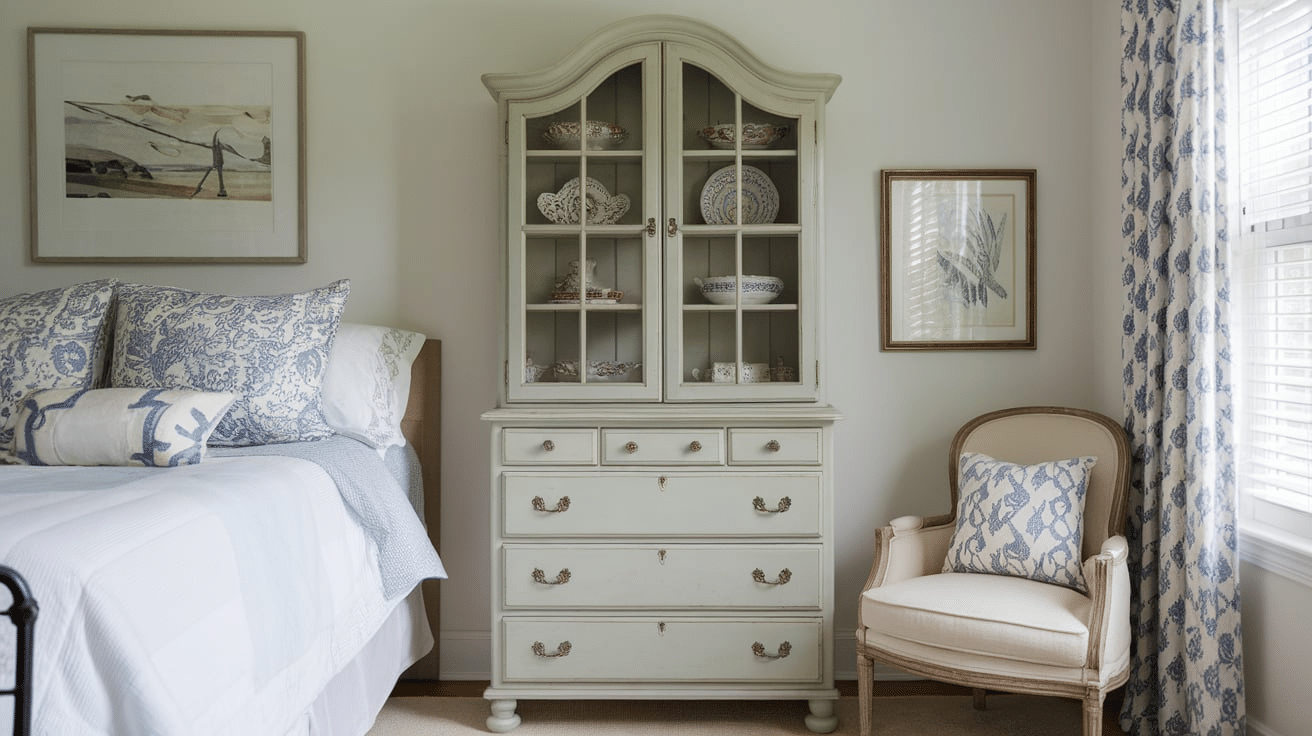
China cabinets can solve storage problems in bedrooms. The lower drawers work perfectly for clothes, while glass-front sections can display jewelry, watches, or special items.
Paint in colors that match your bedroom theme. Add fabric-lined baskets to shelves for smaller items.
This combination of practical storage and a unique look stands out from standard bedroom furniture.
13. Repurpose as a Display Cabinet
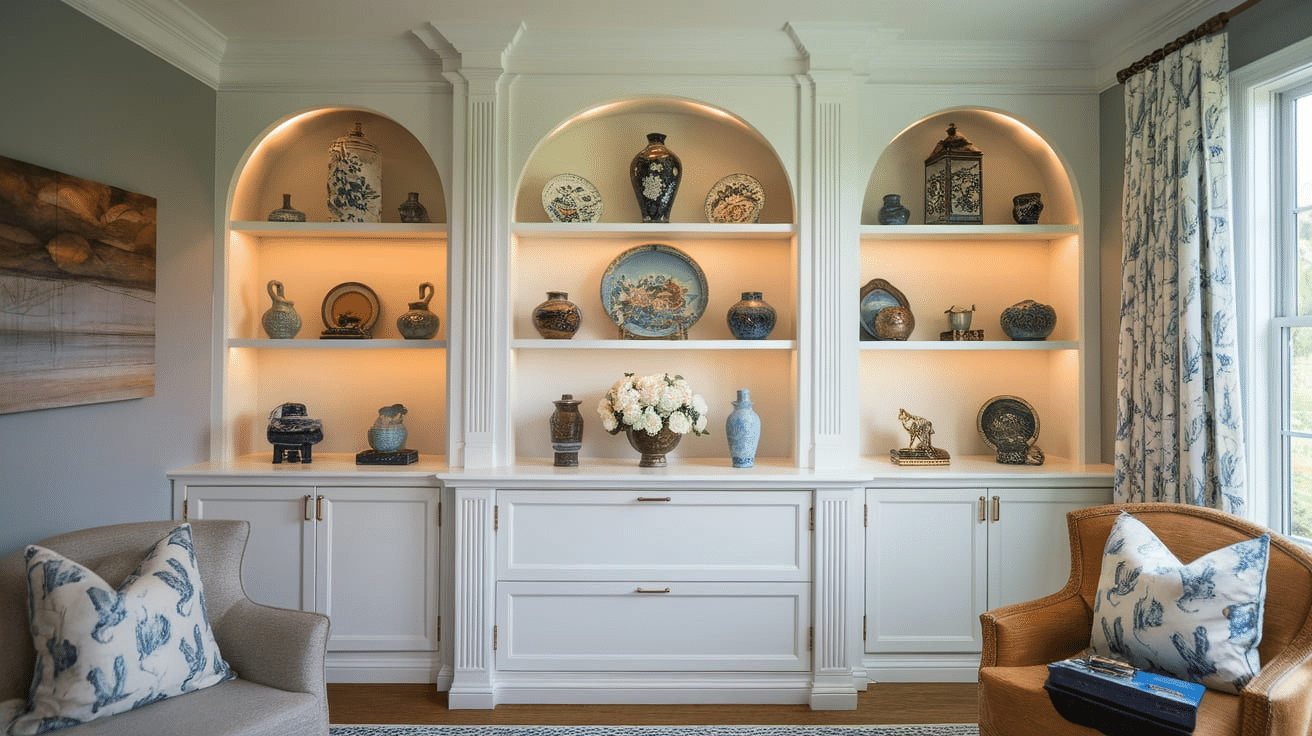
Some china cabinets shine as pure display pieces. Remove doors completely for easy access and an open feel. Paint interiors in colors that complement your displayed items.
Add small lighting under the shelves to highlight collections. Arrange shelves at varying heights based on what you’ll display.
This approach works well for book lovers, collectors, or anyone who wants to show off special items in a living room or study.
Step-by-Step Guide to DIY China Cabinet Makeover
Taking on a china cabinet project yourself can be rewarding and cost-effective. Here are clear, simple steps anyone can follow to tackle it from start to finish.
Step 1: Preparation
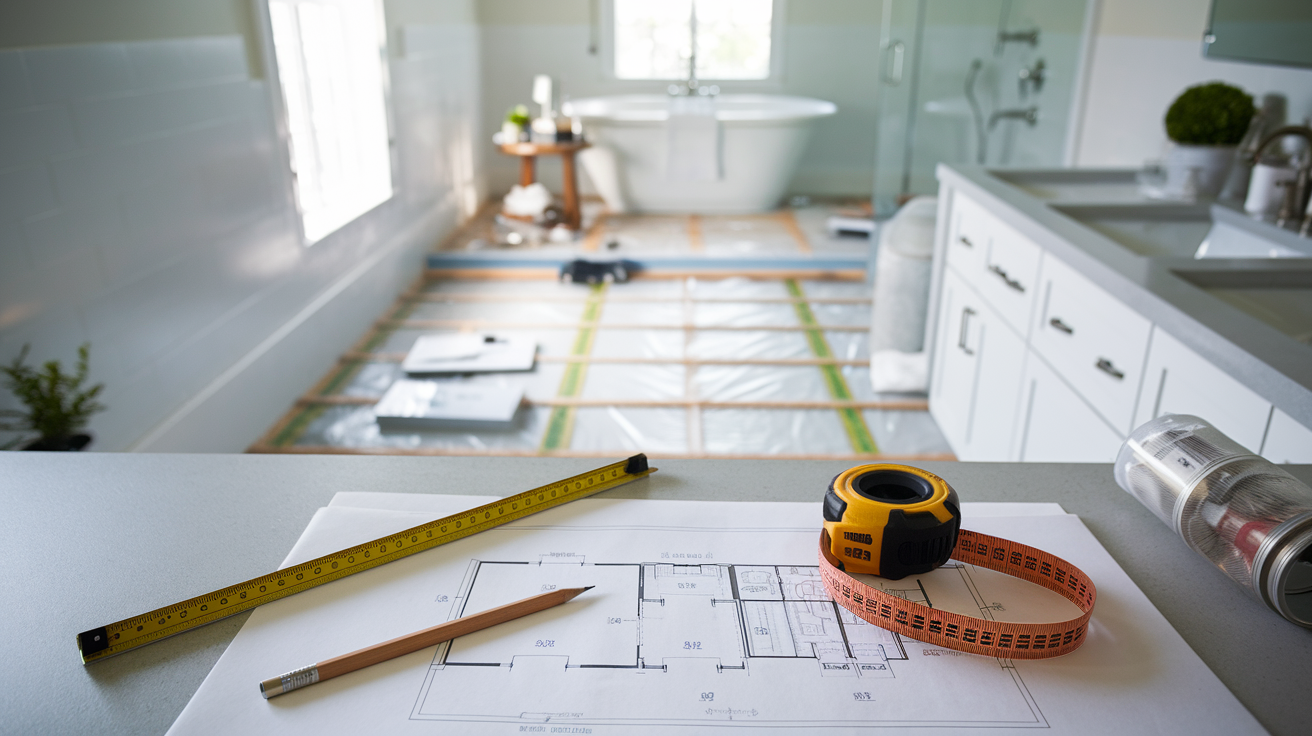
Start by emptying the cabinet and removing all hardware, doors, and shelves. Label each piece and its location with painter’s tape to make reassembly easier.
Clean thoroughly with a mild soap and water solution to remove dirt and grease buildup. For stubborn grime, use a specific wood cleaner. Let the cabinet dry completely before moving to the next step.
Fill any holes, scratches, or dents with wood filler and allow it to dry according to the product instructions.
Step 2: Sanding and Painting/Staining
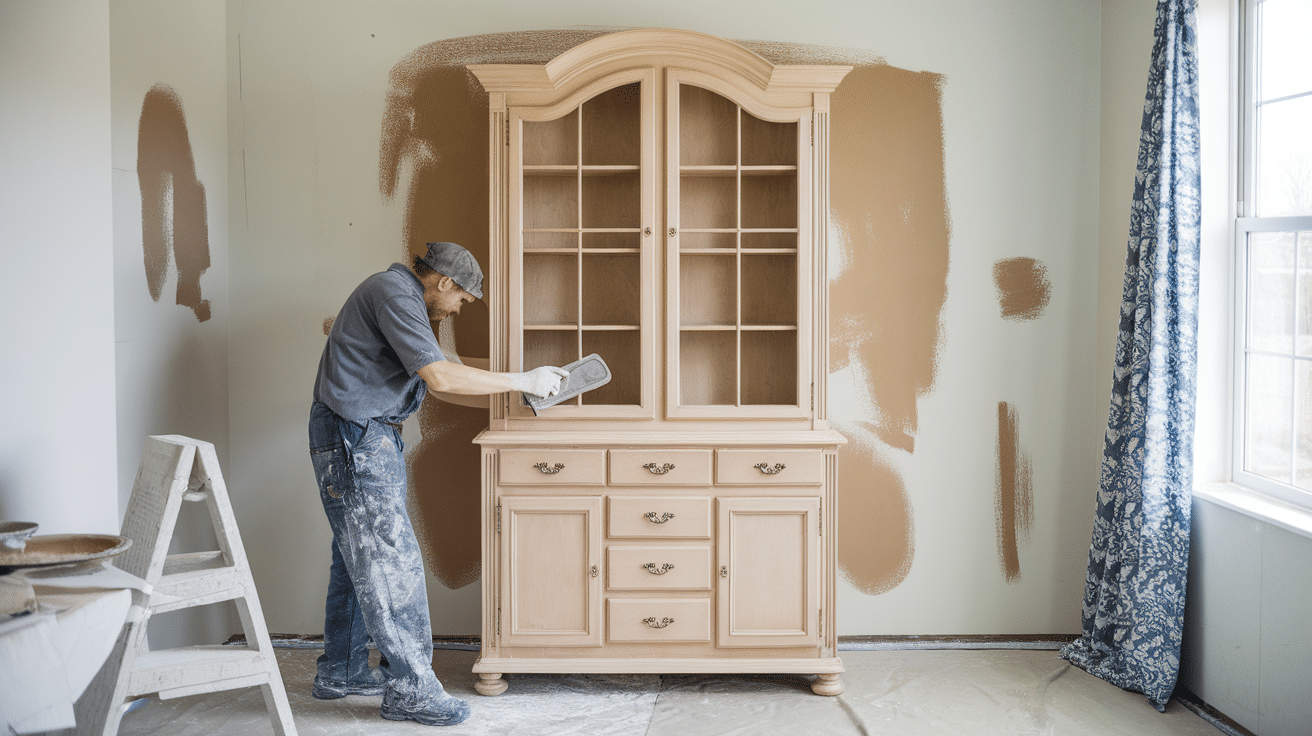
For painting, sand all surfaces with medium-grit sandpaper (120-150) to create a surface the paint can grip.
- For staining, start with coarser paper and work up to fine grit for a smooth finish.
- Wipe away all dust with a damp cloth.
- Apply primer if painting, especially when going from dark to light colors.
- Use a brush for detailed areas and a small roller for flat surfaces.
- Apply thin coats of paint or stain, allowing proper drying time between layers.
Most projects need 2-3 coats for even coverage and lasting results.
Step 3: Installing New Hardware
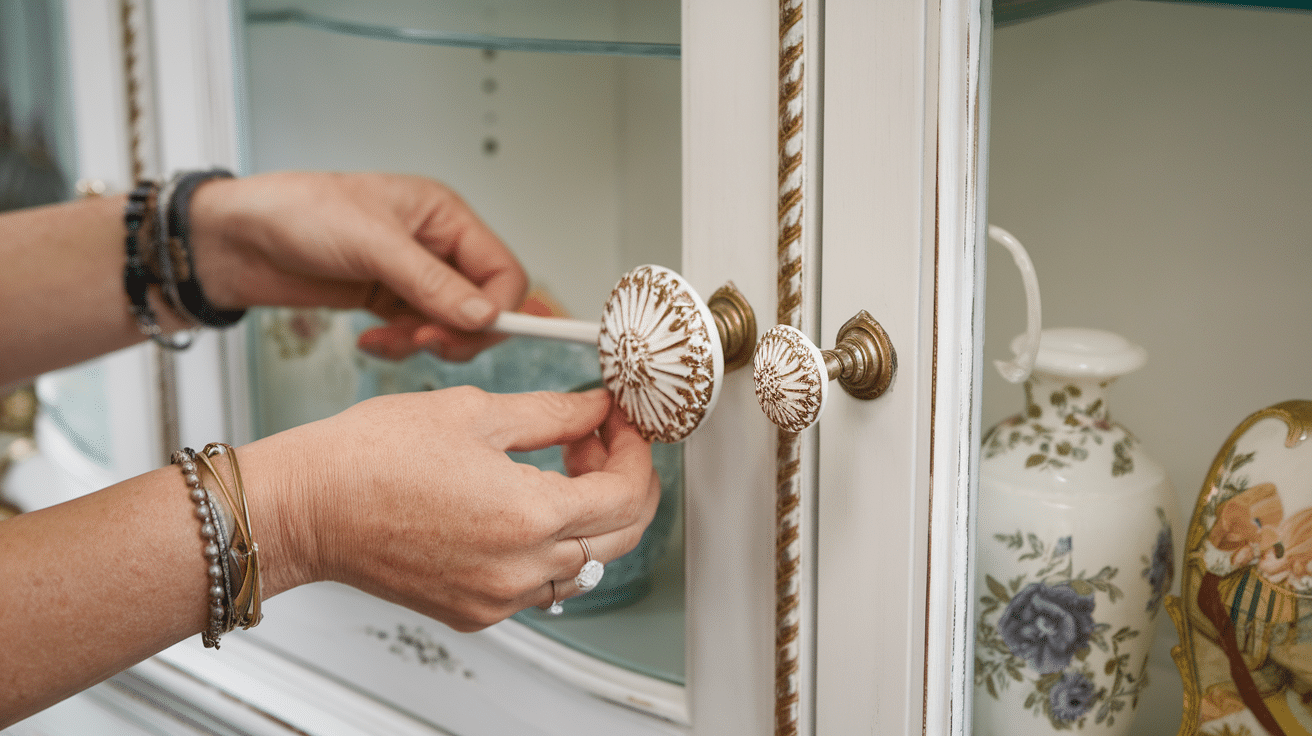
New hardware can change the entire look of your cabinet. Measure the distance between existing holes before shopping.
If creating new holes, use a template to ensure straight alignment. Consider the cabinet’s style when choosing hardware – sleek handles for modern looks, glass knobs for vintage styles.
Brass and gold tones are popular for warmth, while black hardware creates contrast on lighter cabinets. Install carefully to avoid damaging your fresh paint job.
Step 4: Finishing Touches
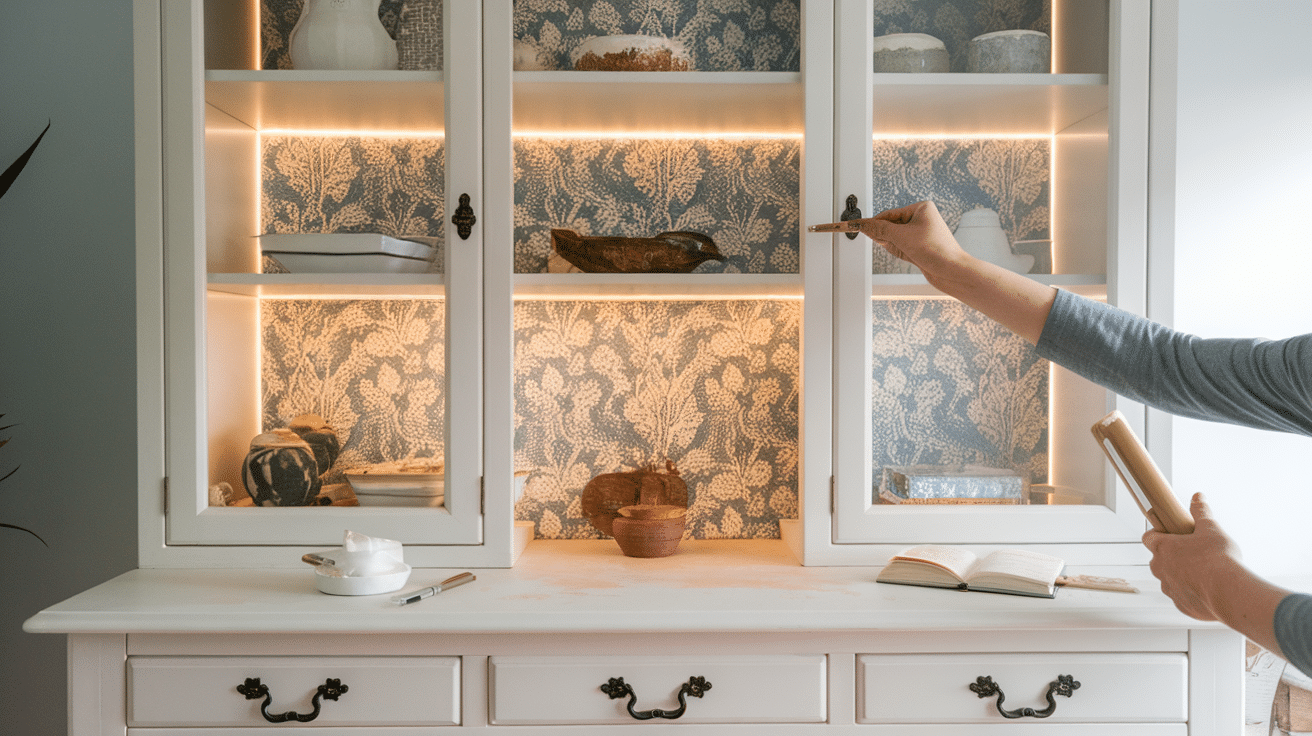
These final details will make your makeover truly special. Consider adding wallpaper or fabric to the back panel for color and pattern.
Replace plain glass with textured or patterned options for visual interest. Add battery-powered LED lights to showcase items inside. Apply a clear protective finish, like polyurethane or furniture wax, to protect your work.
Replace shelves and doors, adjusting hinges if needed for proper alignment. Take photos to compare with your “before” shots and enjoy the upgrade!
Troubleshooting Common Problems
Even experienced DIYers run into challenges when working on furniture makeovers. Knowing how to address common issues can save your project from disappointment and help you achieve professional-looking results.
- Uneven Sanding: Sand rough areas with fine-grit paper, wipe clean, and apply a thin new coat of paint.
- Brush Marks: Use thin coats and quality brushes—sand between layers for smoothness.
- Dripping Paint: Apply thinner coats and watch for drips as you work. Fix dried drips by sanding and repainting.
- Wobbly Shelves: Secure with small L-brackets or replace shelf pins with sturdier options.
- Sticky Drawers: Apply paste wax to drawer runners or sand down swollen areas.
- Misaligned Doors: Adjust hinges by loosening screws, repositioning, and retightening.
- Peeling Paint: Sand back to the solid surface, prime bare spots, and repaint.
Conclusion
Giving new life to an old china cabinet is a fulfilling project that combines creativity with practicality.
Your updated piece can become a stunning focal point that perfectly matches your style and meets your needs.
The changes don’t need to be huge to make a big difference—sometimes, a fresh coat of paint and new hardware are all that’s required to upgrade something forgotten into something cherished.
If you choose a bold new color, repurpose it for modern use, or simply refresh its look, your china cabinet makeover will satisfy you each time you see it. Take that first step—your future showpiece is waiting to be revealed.
Frequently Asked Questions
Can I paint over a stained china cabinet?
Yes, with proper cleaning, sanding, and priming, you can successfully paint over any stained cabinet for a fresh look.
What is the best paint for a china cabinet?
Chalk paint or high-quality furniture paint offers good coverage and durability with minimal prep work needed.
What are some budget-friendly ways to update a china cabinet?
New hardware, contact paper backing, and a simple paint refresh can completely upgrade your cabinet without major expenses.

